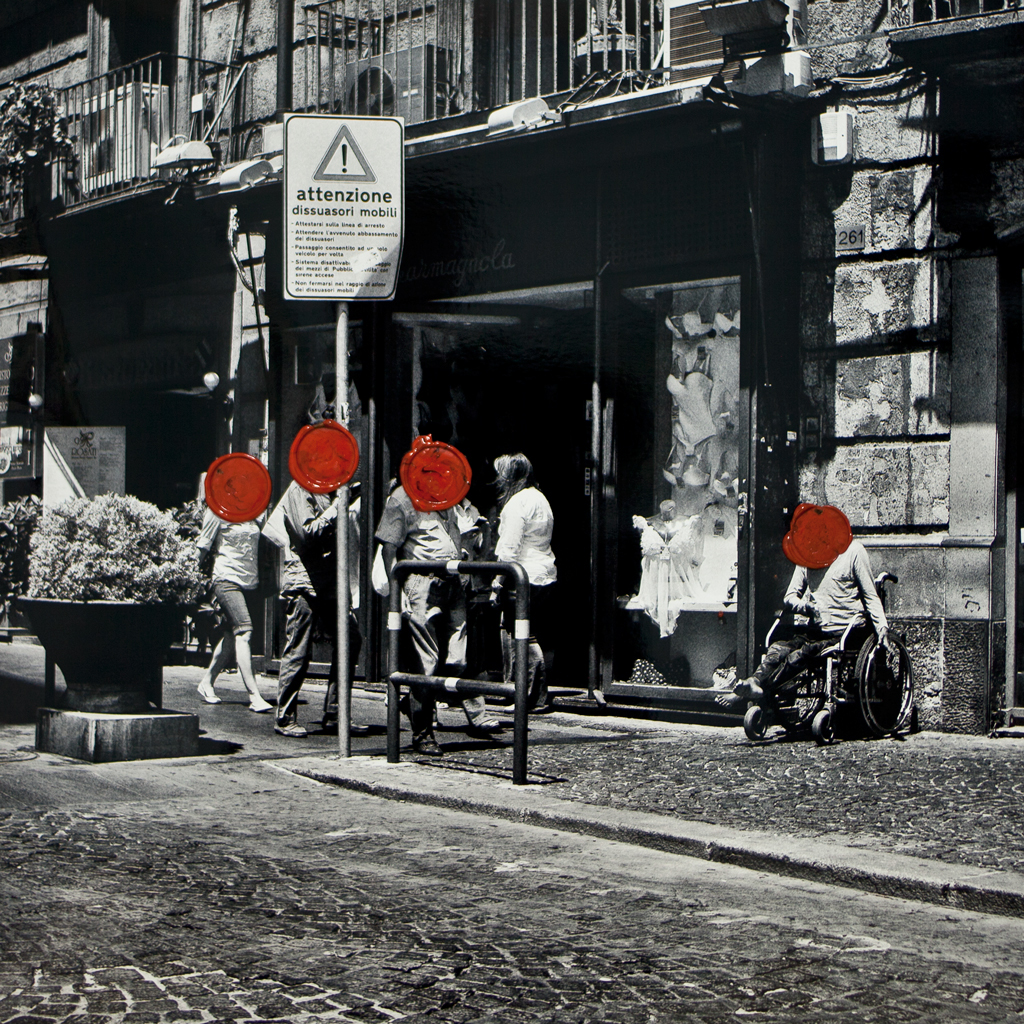




5 scatti estratti dalla omonima mostra che ha inaugurato .1 Studio (Phos) (graphis).
La mostra nasce dal lavoro degli ultimi anni, una riflessione scaturita da centinaia di scatti realizzati per le strade di Napoli e non solo.
Scatti rubati alla città, ai volti della gente, alla linfa vitale di una comunità.
Privacy Street propone una provocatoria riflessione sul ‘diritto di scatto’, sulla questione della disciplina legale della fotografia di persone in luoghi pubblici e la possibilità di utilizzare le immagini della vita di una collettività.
Eppure gli artisti della ‘Street Photography’, il fotoreportage sociale, nato in America e in Francia e diffuso in tutto il mondo, ha prodotto delle straordinarie storie visive che sono state raccontate da William Klein, Robert Frank, Eugene Smith, Henri Cartier-Bresson, Robert Doisneau, per citare solo i più pubblicati.
‘La Privacy è un concetto astratto, regolamentato da una legge estremamente restrittiva per chi come me, percorre continuamente le strade e reagisce con un “click” ad ogni stimolo. Il materiale acquisito tra i vicoli della mia città, non è sempre utilizzabile a causa della Legge sul diritto alla Privacy. Nonostante si potrebbe rendere il proprio scatto originale e unico tanto da poter vantare i diritti dell’opera d’arte, il fotografo non è preservato da eventuali azioni legali’.
La fotografia di strada, ci ha mostrato come erano i nostri genitori, come era la vita e il costume negli anni, cosa si tramanderà alle generazioni future?
Nella società del Grande Fratello le violazioni del diritto alla privacy vengono costantemente e continuamente disattese dalle miriadi di telecamere, cellulari, navigatori e da tutto ciò che può attestare la nostra presenza fisica in un luogo definito in un’ora definita.
Privacy Street è un modo per accendere il dibattito sulla questione, una modalità per dimostrare che non bisogna abbassare l’attenzione su una questione, sempre attuale, ma ad oggi senza garanzie se non quella di una liberatoria.
5 shots taken from the eponymous exhibition which opened .1 Studio ( Phos ) ( graphis ) .
The exhibition was inspired by the work of recent years, a debate arose out of hundreds of photos taken on the streets of Naples and beyond.
Stolen shots of the city, the faces of the people, the lifeblood of a community.
Stolen shots of the city, the faces of the people, the lifeblood of a community.
Privacy Street offers a provocative reflection on the ‘ right click ‘ on the question of legal discipline of photography of people in public places and the possibility to use the images of the life of a community.
Yet the artists of ‘ Street Photography ‘ , the social photojournalism , born in America and in France and spread throughout the world , has produced extraordinary visual stories that have been told by William Klein , Robert Frank , Eugene Smith , Henri Cartier- Bresson Robert Doisneau , to mention only the most published.
‘ Privacy is an abstract concept, regulated by a law extremely restrictive for people like me , continually runs the streets and reacts with a “click” to each stimulus . The material acquired through the narrow streets of my city, it is not always usable because of the Law on the Right to Privacy. Although you may make your own original shot and unique enough to claim rights to the work of art, the photographer is not preserved by any legal action ‘ .
The street photography , showed us how our parents were , as was life, and the costume over the years, what it hand down to future generations ?
The street photography , showed us how our parents were , as was life, and the costume over the years, what it hand down to future generations ?
In the society of Big Brother violations of the right to privacy are constantly and continually disregarded by the myriad of cameras , cell phones , navigators and all that can attest to our physical presence in a given place in a set time .
Privacy Street is a way to turn the debate on the issue, a way to show that it is necessary to lower the attention on an issue, always present , but to date no guarantees but to a release.

